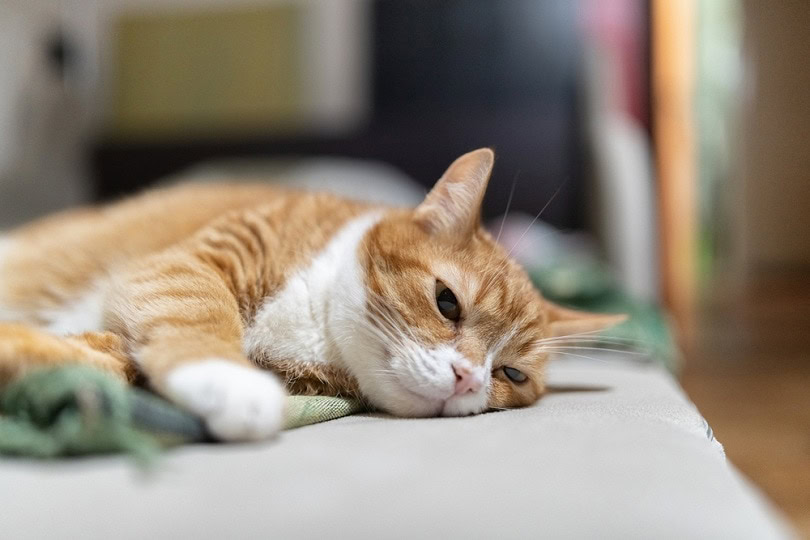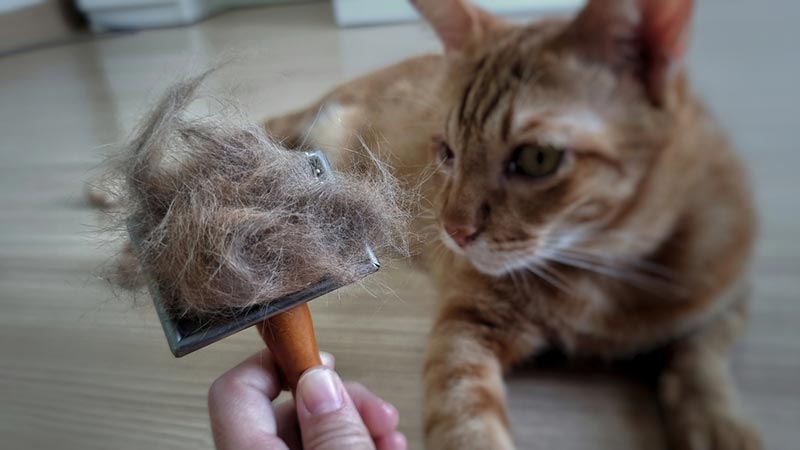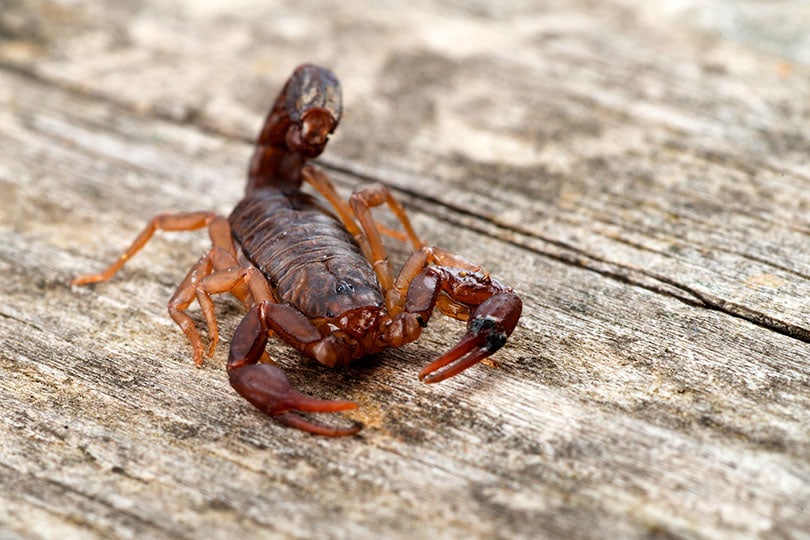VET APPROVED

The information is current and up-to-date in accordance with the latest veterinarian research.
Learn more »Click to Skip Ahead
It’s always heartbreaking to see one of your cats get sick, and even more concerning when the illness is contagious. You may find yourself wondering if all your cats will soon start sneezing and developing runny noses. So, should you isolate a sick cat? While isolation isn’t always necessary when a cat falls ill, upper respiratory infections (URI) require certain precautions—and in some cases, separating the sick cat may be the best approach.
Feline URI is similar to a human cold, which is why it’s often referred to as “cat flu.” The viruses and bacteria that cause URI spread through ocular, nasal, and oral secretions, making the disease highly contagious. In a multi-cat household, it’s important to take preventive measures. Since stress can increase a cat’s risk of developing signs of the disease, consider the severity of the illness, the age and health of the other cats, and how isolation might affect the sick cat. If feasible, isolating the cat with URI until they are no longer contagious is generally recommended.

What Causes Upper Respiratory Infections in Felines?
A feline URI is typically caused by one or more bacterial or viral agents in the body. Several agents could cause the infection, but the most common viruses that cause a URI are the feline herpesvirus type-1 (FHV-1) and the feline calicivirus (FCV). The most common bacteria that cause a URI are Bordetella bronchiseptica and Chamydophila felis. It is believed that more than 95% of the cat population has been exposed to FHV and over 80% are carriers of the virus.
What Are the Signs of an Upper Respiratory Infection?
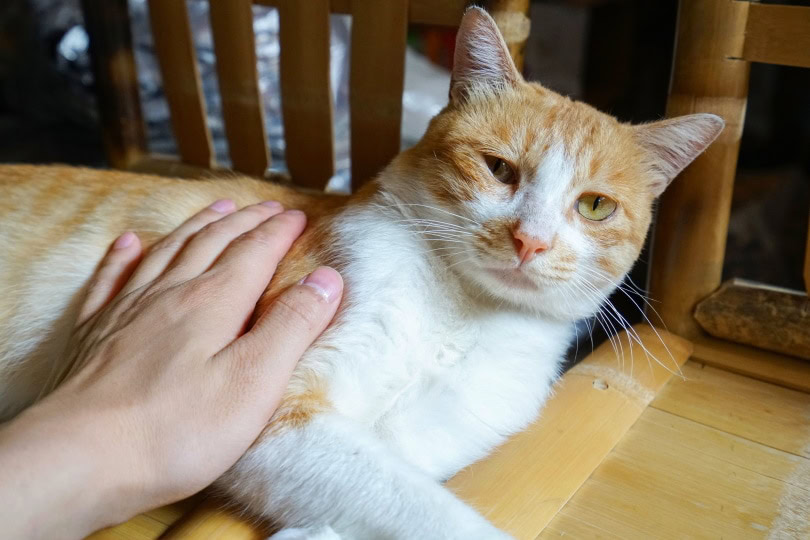
URIs are similar to a human cold. A lot of the signs of a URI are found in the nose, eyes, and throat area. Sick cats might experience sneezing, runny nose, red eyes, sores on the mouth, fever, lethargy, and lack of appetite.
Discharge coming from the nose and eyes may be clear or cloudy in appearance. The more severe the illness gets, the more difficulty the cat has breathing. In general, most of the symptoms of a URI last 7 to 10 days long.
How Do Cats Get Upper Respiratory Infections?
Both the viruses and bacteria that lead to a URI are highly contagious between cats. Infected cats shed particles through their saliva or from eye and nose secretions. Cats either get infected by being in direct contact with an infected cat, or they can get it by environmental exposure from objects that an infected cat has interacted with. These objects could be water bowls, toys, bedding, and litter boxes.
Thankfully, both the virus and bacteria do not survive for long periods while in the environment. They can be easily destroyed with proper disinfectants and other household cleaners.
When to Take Your Sick Cat to the Veterinarian
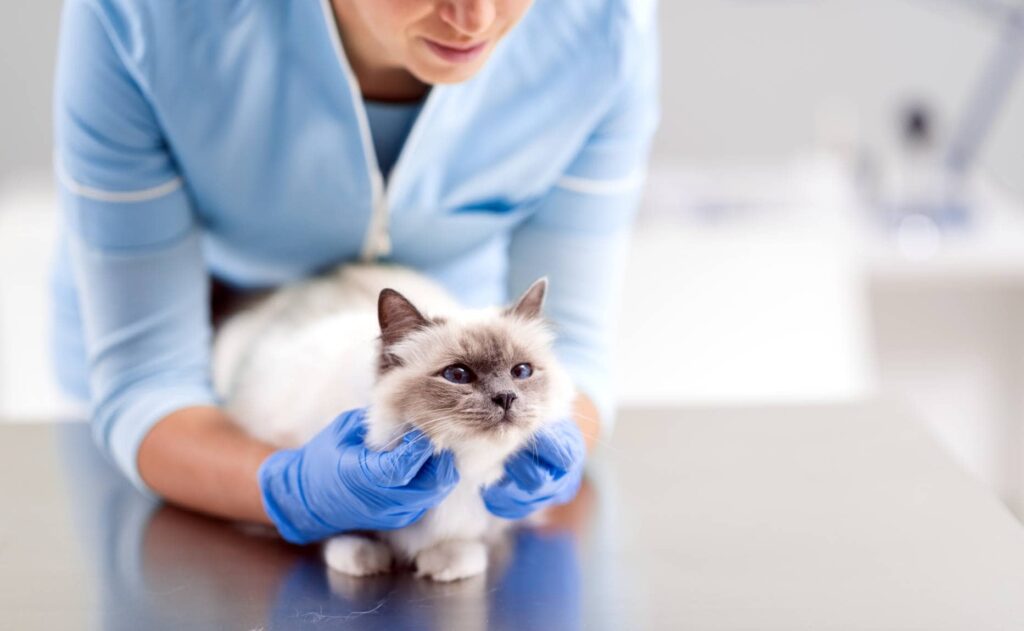
Keep in mind that cats who are around a lot of other cats are the ones who are most likely to get a URI. If you adopted a cat from a shelter, make sure to take them in for an examination regardless of whether they have any signs of the disease or not.
Rest and proper care are crucial for getting your kitty back to normal. Many cats recover within a couple of weeks. Still, it might be hard to know the right time to take them to the vet. Here are some URI signs that your cat needs to see a professional:
- Not eating for 12–24 hours
- Green or yellow discharge from eyes and nose
- Difficulty breathing, noisy breathing
- Lethargy
- Vomiting
- Diarrhea
- Little to no improvement after 1–2 days of your at-home care
How Long Do Upper Respiratory Infections Last?
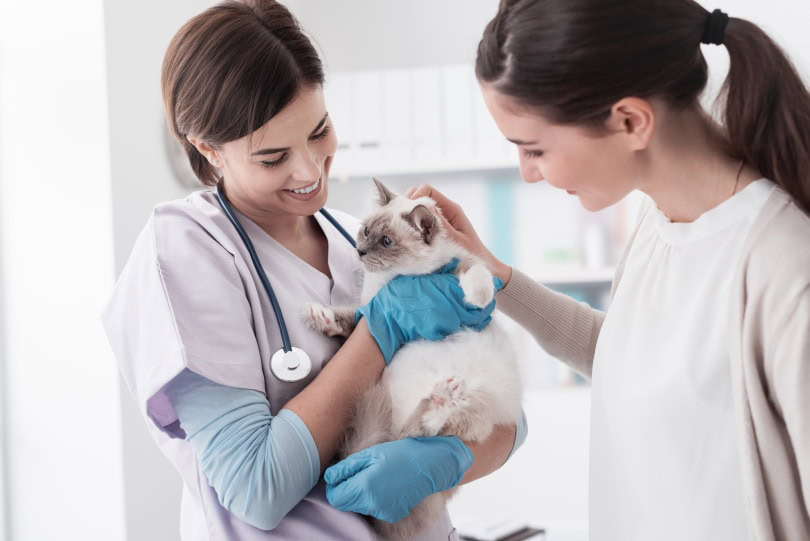
Cats go through an incubation period lasting 2 to 10 days once exposed to an infectious agent. Most infections last about 7 to 21 days, but 7 to 10 days is the average. Cats are contagious during this entire time.
Cats with the herpes virus infection, also called feline viral rhinotracheitis, are a bit different. Some cats are chronic carriers and essentially carry the disease for life. Stress usually triggers the agent to become reactivated, but others don’t have signs ever again. Many herpesvirus carriers are free from signs but are still a risk to other cats. This is why vaccination in cats is so important.
How Upper Respiratory Infections Are Diagnosed and Treated
Veterinarians might collect samples from your cat’s eyes, nose, or throat to identify the agent causing the illness. Sometimes, additional tests like X-rays and blood tests are required.
Cats with uncomplicated URIs are treated at home with supportive care and sometimes, prescription medication. Supportive care involves steam therapy, taking your cat to a steamy bathroom for 10 minutes several times a day, nebulization, nutritional support, cleaning away discharges, TLC, and grooming. Medications may include nasal decongestants, mucolytics, anti-inflammatories, antibiotics, and antivirals. If your cat is dehydrated, very weak, or has signs of pneumonia, they may have to be hospitalized.
How Long to Isolate a Sick Cat?
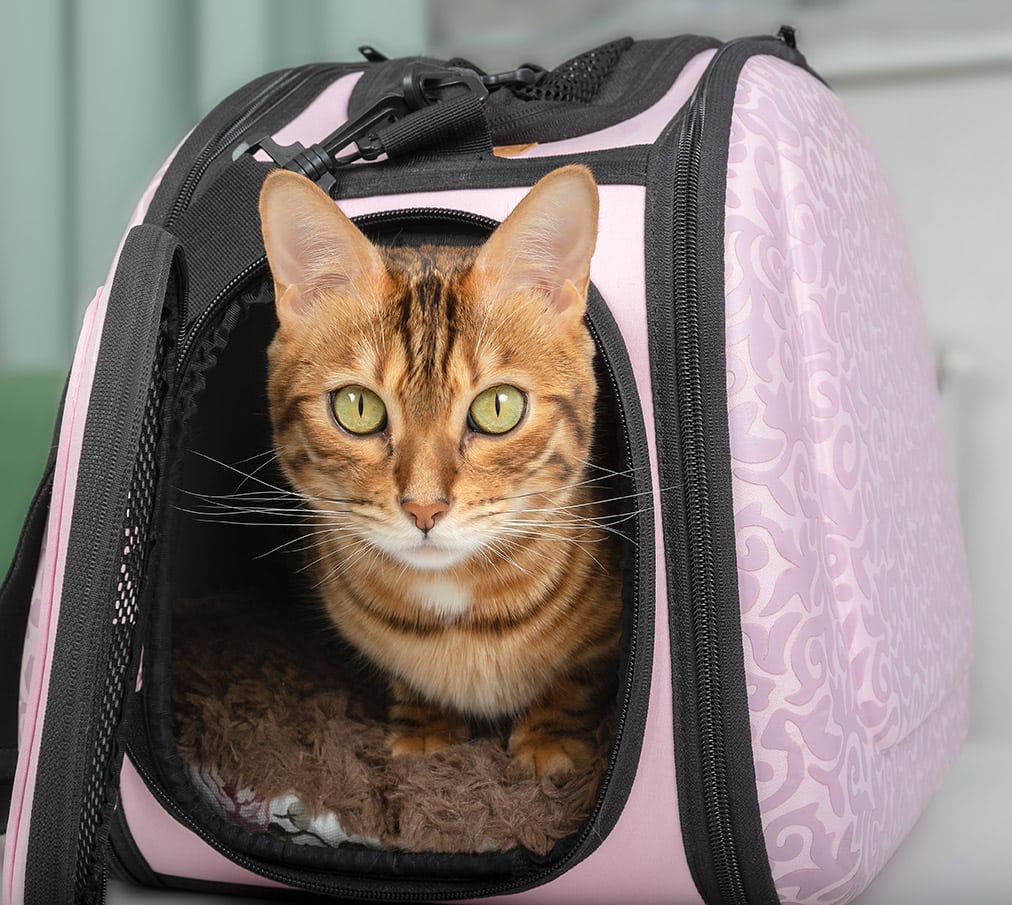
Depending on the age, health of your other cats, and the severity of your cat’s signs, you may need to keep your sick cat in isolation during their incubation period, or around 3 weeks after they start developing signs. Cats should be vaccinated against URI, but the vaccine doesn’t protect them 100%. Elderly cats, young, or unvaccinated kittens, and cats with chronic conditions are most susceptible.

Final Thoughts
Illness is a sad but natural part of life for all living creatures. When a disease can be prevented with a vaccine, responsible pet ownership includes ensuring all your cats are vaccinated. While vaccines may not always prevent infection entirely, they typically reduce the severity of signs, much like the human flu vaccine.
No pet owner wants to deal with a house full of sick animals. In most cases, isolating a sick cat is the safest approach, but it’s important to consult a veterinarian to confirm if the illness is a URI, to receive appropriate treatment and guidance, and to rule out other conditions.
- Next on your reading list: Can Cats Catch Colds? Symptoms, Causes, and Care
Featured Image Credit: shymar27, Shutterstock
